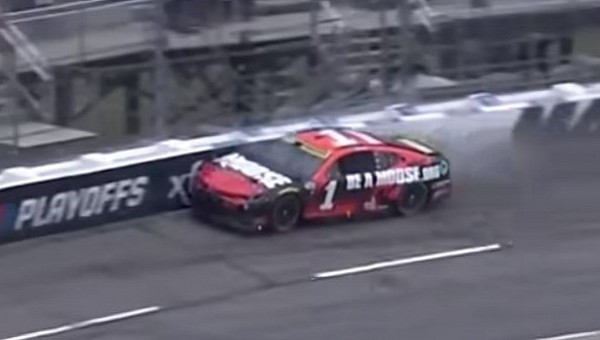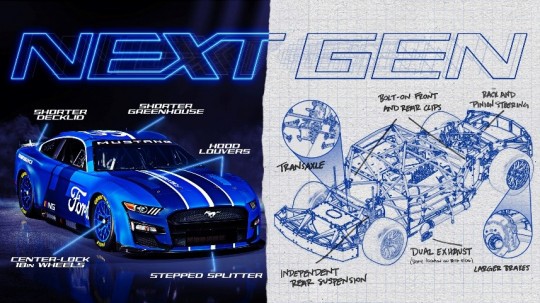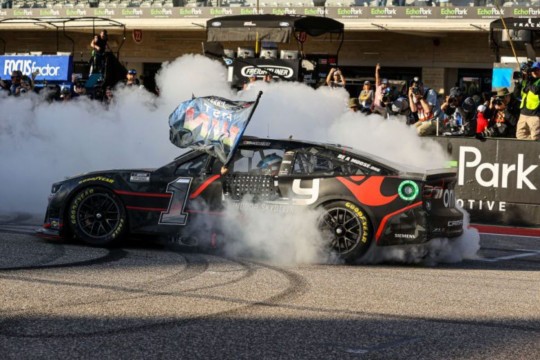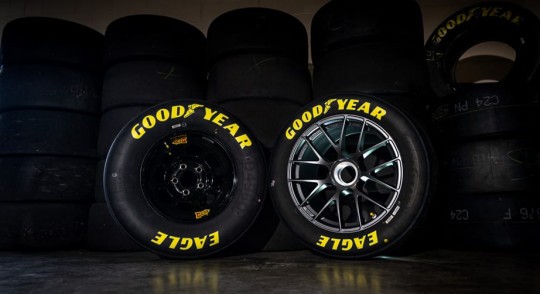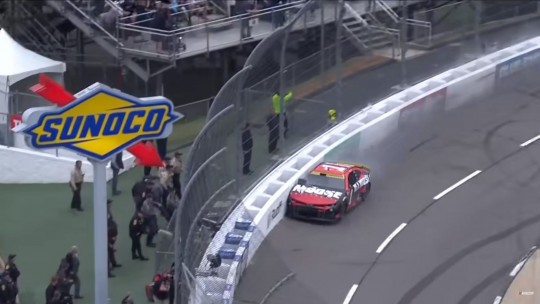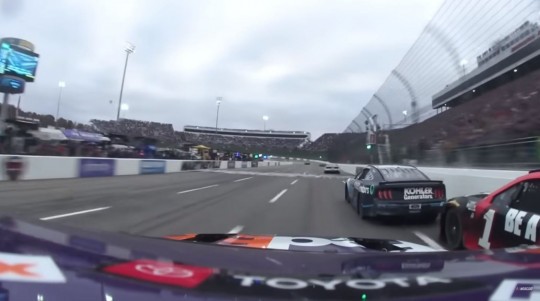cybermad
Clan Leader
- Modelo
- Z3 2.8 / GR86
- Registrado
- 11 Feb 2008
- Mensajes
- 105.697
- Reacciones
- 93.409
Así explica la física el espectacular adelantamiento de Ross Chastain en Martinsville (NASCAR)
14 noviembre, 2022

El pasado 30 de octubre se produjo un hecho increíble en Martinsville, la prueba decisiva en la NASCAR. Un adelantamiento protagonizado por Ross Chastain más propio de un videojuego de la PlayStation que de una carrera en la vida real. Pero ¿cómo fue posible? La física lo explica.
La maniobra se hizo viral en las redes sociales y no era para menos. Incluso, algunos pilotos de otras categorías, como la Fórmula 1, no daban crédito. El Chevrolet pilotado por Chastain consiguió superar a cinco rivales pegándose a la barrera y clasificarse para la final, dejando en la cuneta, de paso, a su principal rival, Denny Hamlin.
Así explica la física el espectacular adelantamiento de Ross Chastain en Martinsville (NASCAR)
Enlace a vídeo https://twitter.com/i/status/1586834658028703744
NASCAR on NBC
@NASCARonNBC
UNBELIEVABLE!
@RossChastain
floors it along the wall to go from 10th to 5th and advance to the CHAMPIONSHIP! #NASCARPlayoffs
Ocurrió en el óvalo de Martinsville, la penúltima carrera de la NASCAR Cup. Ross Chastain iba en la décima posición y, por tanto, estaba fuera de la final. Necesitaba quedar entre los cinco primeros para estar allí y solo faltaba una curva. Así que al piloto estadounidense no se le ocurrió otra cosa que pisar el pedal a fondo para irse directo contra el muro.
Rozando todas las protecciones, adelantó a cinco pilotos y se clasificó para la final. De esta forma, se libró del tráfico y pudo pasar a más velocidad, pese a dejar el coche destrozado.
Enlace a vídeo
https://twitter.com/i/status/1587499195161661440
https://twitter.com/JaSantaolalla/status/1587499195161661440

Javier Santaolalla
@JaSantaolalla
La física detrás de este genio de las leyes de Newton Me lo pidieron... y aquí lo tienen
Javier Santaolalla, doctor en física de partículas e ingeniero, lo explica en Twitter recurriendo a la primera ley de Newton, según la cual, todo cuerpo tiende a mantener su estado de movimiento en línea recta a no ser que se le aplique una fuerza. Esto es un principio básico en el automovilismo, donde todos los circuitos tienen rectas en las que la aerodinámica se encarga de mantener el vehículo pegado al suelo con una velocidad, e incluso incrementándose con la potencia que genera el motor.
Pero todo cambia cuando llega una curva. Así, hay que pisar el freno para tomar la trazada sin salirse. En ese momento, la fuerza de rozamiento de la carrocería hace que se reduzca la velocidad, pero no es lo suficiente, ya que el freno disminuye la cantidad de veces que giran las ruedas.
La fuerza empuja hacia el exterior de la curva y aquí es donde interviene la segunda ley de Newton: cuanta más fuerza, más aceleración, es decir, cuanto mayor es la velocidad y más cerrada es la curva, la aceleración de giro será más y se generará más fuerza.
Esto se debe a la fricción de las ruedas contra el asfalto, lo que provoca el agarre, la degradación y el deslizamiento. Justo ahí desaparece el agarre y el coche derrapa o se sale de la curva. En el caso de Ross Chastain, esa fuerza para tomar una trazada más rápida la tomó de otro lado: al apoyarse en el muro, toma de aquí la fuerza centrípeta y no hay posibilidad de deslizamiento, por lo que fue a una velocidad mayor en la curva.
14 noviembre, 2022

El pasado 30 de octubre se produjo un hecho increíble en Martinsville, la prueba decisiva en la NASCAR. Un adelantamiento protagonizado por Ross Chastain más propio de un videojuego de la PlayStation que de una carrera en la vida real. Pero ¿cómo fue posible? La física lo explica.
La maniobra se hizo viral en las redes sociales y no era para menos. Incluso, algunos pilotos de otras categorías, como la Fórmula 1, no daban crédito. El Chevrolet pilotado por Chastain consiguió superar a cinco rivales pegándose a la barrera y clasificarse para la final, dejando en la cuneta, de paso, a su principal rival, Denny Hamlin.
Así explica la física el espectacular adelantamiento de Ross Chastain en Martinsville (NASCAR)
Enlace a vídeo https://twitter.com/i/status/1586834658028703744
NASCAR on NBC
@NASCARonNBC
UNBELIEVABLE!
@RossChastain
floors it along the wall to go from 10th to 5th and advance to the CHAMPIONSHIP! #NASCARPlayoffs
Ocurrió en el óvalo de Martinsville, la penúltima carrera de la NASCAR Cup. Ross Chastain iba en la décima posición y, por tanto, estaba fuera de la final. Necesitaba quedar entre los cinco primeros para estar allí y solo faltaba una curva. Así que al piloto estadounidense no se le ocurrió otra cosa que pisar el pedal a fondo para irse directo contra el muro.
Rozando todas las protecciones, adelantó a cinco pilotos y se clasificó para la final. De esta forma, se libró del tráfico y pudo pasar a más velocidad, pese a dejar el coche destrozado.
Enlace a vídeo
https://twitter.com/i/status/1587499195161661440
https://twitter.com/JaSantaolalla/status/1587499195161661440

Javier Santaolalla
@JaSantaolalla
La física detrás de este genio de las leyes de Newton Me lo pidieron... y aquí lo tienen
Javier Santaolalla, doctor en física de partículas e ingeniero, lo explica en Twitter recurriendo a la primera ley de Newton, según la cual, todo cuerpo tiende a mantener su estado de movimiento en línea recta a no ser que se le aplique una fuerza. Esto es un principio básico en el automovilismo, donde todos los circuitos tienen rectas en las que la aerodinámica se encarga de mantener el vehículo pegado al suelo con una velocidad, e incluso incrementándose con la potencia que genera el motor.
Pero todo cambia cuando llega una curva. Así, hay que pisar el freno para tomar la trazada sin salirse. En ese momento, la fuerza de rozamiento de la carrocería hace que se reduzca la velocidad, pero no es lo suficiente, ya que el freno disminuye la cantidad de veces que giran las ruedas.
La fuerza empuja hacia el exterior de la curva y aquí es donde interviene la segunda ley de Newton: cuanta más fuerza, más aceleración, es decir, cuanto mayor es la velocidad y más cerrada es la curva, la aceleración de giro será más y se generará más fuerza.
Esto se debe a la fricción de las ruedas contra el asfalto, lo que provoca el agarre, la degradación y el deslizamiento. Justo ahí desaparece el agarre y el coche derrapa o se sale de la curva. En el caso de Ross Chastain, esa fuerza para tomar una trazada más rápida la tomó de otro lado: al apoyarse en el muro, toma de aquí la fuerza centrípeta y no hay posibilidad de deslizamiento, por lo que fue a una velocidad mayor en la curva.

